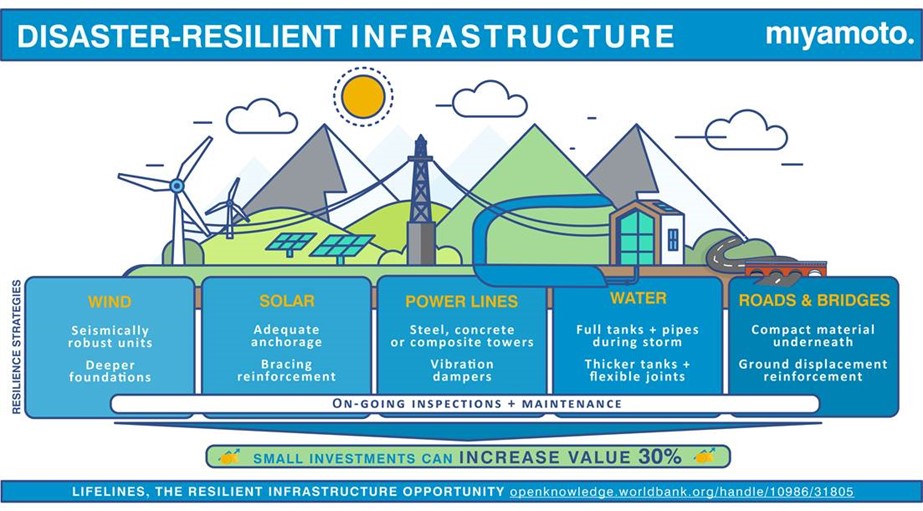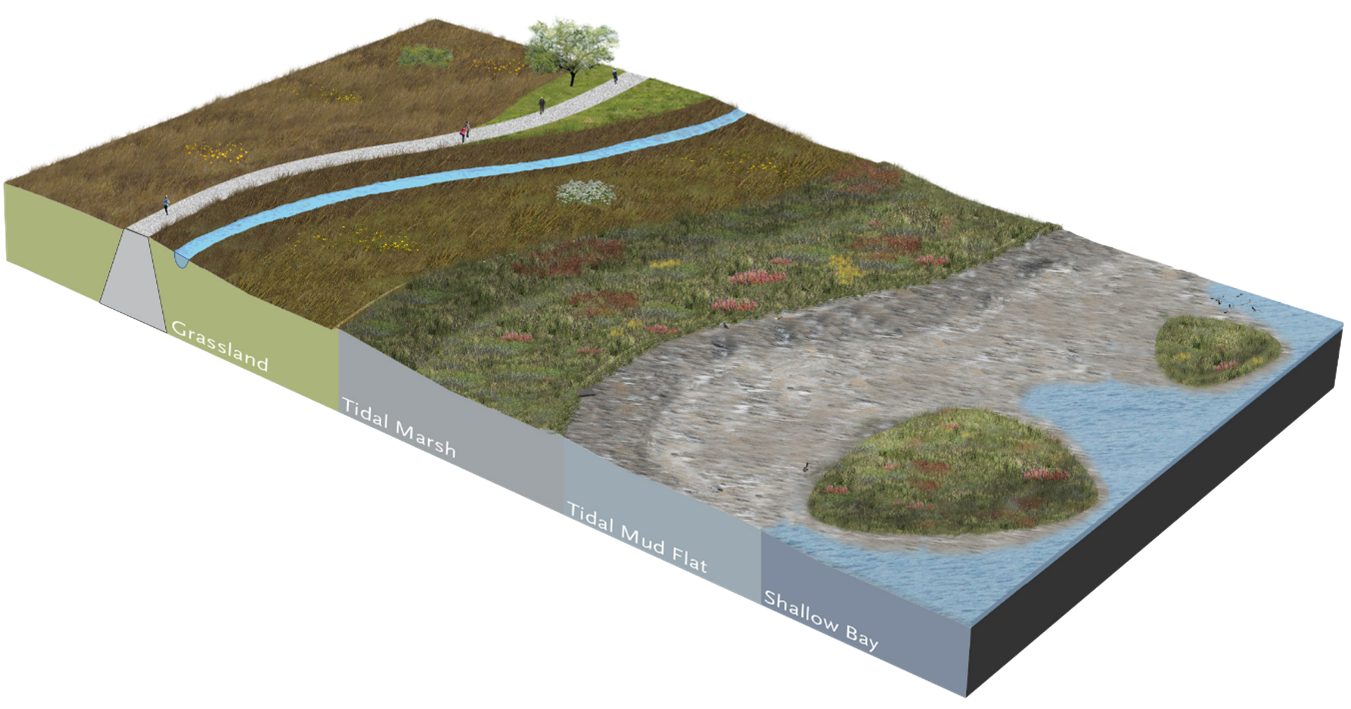By Lucienne Cross
This week, the Intergovernmental Panel on Climate Change (IPCC) released its Sixth Assessment Report, providing daunting data on the relentless and irrevocable reality of the negative impacts on our planet. In the same week, U.S. President Biden’s infrastructure bill passed the Senate at $1 trillion and experts have been quick to point out the growing recognition of infrastructure as a climate investment, where the return is not only cleaner energy, services, and jobs, but dollar- and life-saving disaster-resilience too.
In fact, the UN estimates that $90 trillion worth of new and strengthened infrastructure is needed to meet the demands of growing populations and an increasingly unpredictable climate. Outdated roads, powerplants and buildings also contribute 70% of the world’s greenhouse gases, meaning new and upgraded infrastructure has the potential to accelerate cities toward both climate-ready goals and commitments to reduce emissions.
Strengthen existing infrastructure
Although new, sophisticated infrastructure is needed, cost-effective strengthening solutions can retrofit existing roads, bridges, and other infrastructure for a fraction of the cost. Miyamoto International, a multi-hazard engineering firm, develops strengthening recommendations by analyzing data from thousands of power, water, energy and transportation assets. The goal is to quantify how much strengthening solutions would cost, compared to the savings they provide by preventing damage and economic downtime. Over and over, the case for resilience is clear. In fact, the World Bank estimates that every dollar invested in strengthening infrastructure results in US $4 in benefits, from preventing disruptions to providing jobs, for a total of $4.2 trillion in life- and economy-saving benefits worldwide.

Design with nature
Existing gray infrastructure is not only no match for stressors like rising sea levels and land subsidence, in many cases it makes things worse by destroying existing natural infrastructure – such as wetlands – that already provided protective services. At least a third of all cities experience “high” or “extremely high” water stress conditions, and natural habitats like coral reefs have proven to reduce storm surge wave energy by up to 97%. From Mexico City to San Francisco, cities are using innovative finance mechanisms and creative design challenges to build hybrid green-gray infrastructure that integrates and enhances, rather that deteriorates, these ecosystem services. Examples include green roofs that keep buildings cool, reduce stormwater runoff and provide social spaces, or horizontal levees that align with the natural topography and hydraulic flow and rely on an additional protective buffer of restored coastal habitat.

Green innovations are also being piloted for infrastructure like transportation or utilities, such as ECOncrete which mimics the biological shape of natural ecosystems, while providing the durability of concrete. Investing in renewable energy is another obvious way to both reduce emissions, but renewable investments need to consider resilience in their design through simple engineering adjustments, like optimizing windmill blade configuration for increasing storms, which can reduce the likelihood of severe wind damage by 50%.
Consider resilience throughout the lifecycle
Climate and disaster-resilience isn’t just a consideration during design or retrofit phases – strategic maintenance plans can also reduce vulnerability and downtime for repairs, even in the face of extreme weather. In Small Island Developing States, for example, the World Bank found that investing in management systems is the highest priority for increasing transportation system resilience, citing that improved maintenance could reduce losses to road infrastructure by 12 percent in Belize and 18 percent in Tonga.
Center women in design
Insights from women and girls are increasingly recognized as pivotal for developing more inclusive and climate-ready structures. A guideline by UNOPS on integrating gender considerations into road and transport infrastructure explains that because of traditional gender roles, women are more likely to use transportation infrastructure throughout the day, including traveling for water and food procurement, school and day care, healthcare, markets in addition to professional job-related commuting. A climate-resilient infrastructure project in Fiji integrated gender-specific needs by requiring 50% female participation in planning committees, resulting in bridges and piers strategically built at sites that facilitated access to social services, ensured pedestrian safety, and included washtubs near bodies of water traditionally used for washing. Inclusive, decentralized, and redundant infrastructure are key characteristics of disaster-resilient infrastructure, says ARUP.
In the last three years, climate-related disasters resulted in over US $650 billion in damages. Cost-effective solutions for resilient infrastructure have the potential to significantly minimize human and economic losses and reduce our ecological impact at the scale needed for bold, immediate climate action.
**
Miyamoto International is a global, multi-hazard engineering and disaster risk management firm that builds resilience to sustain economies, safeguard communities and save lives around the world.
